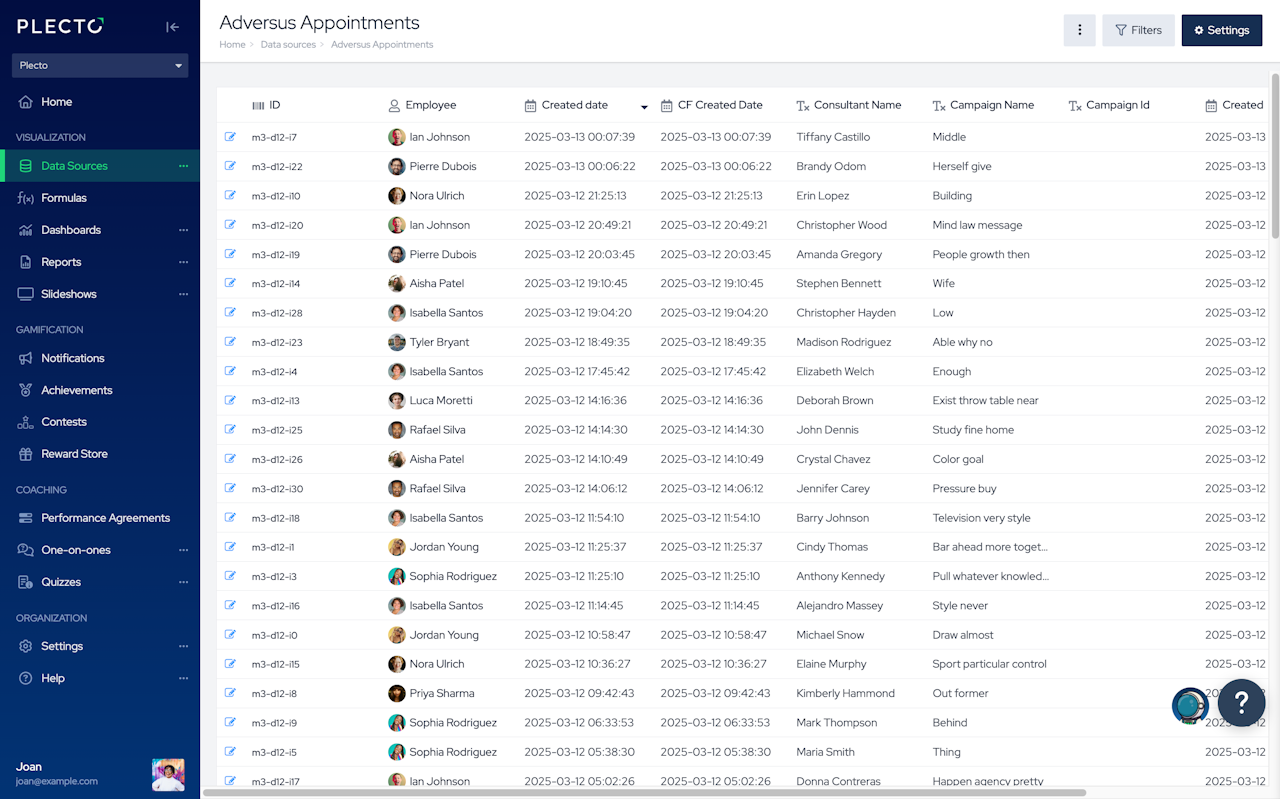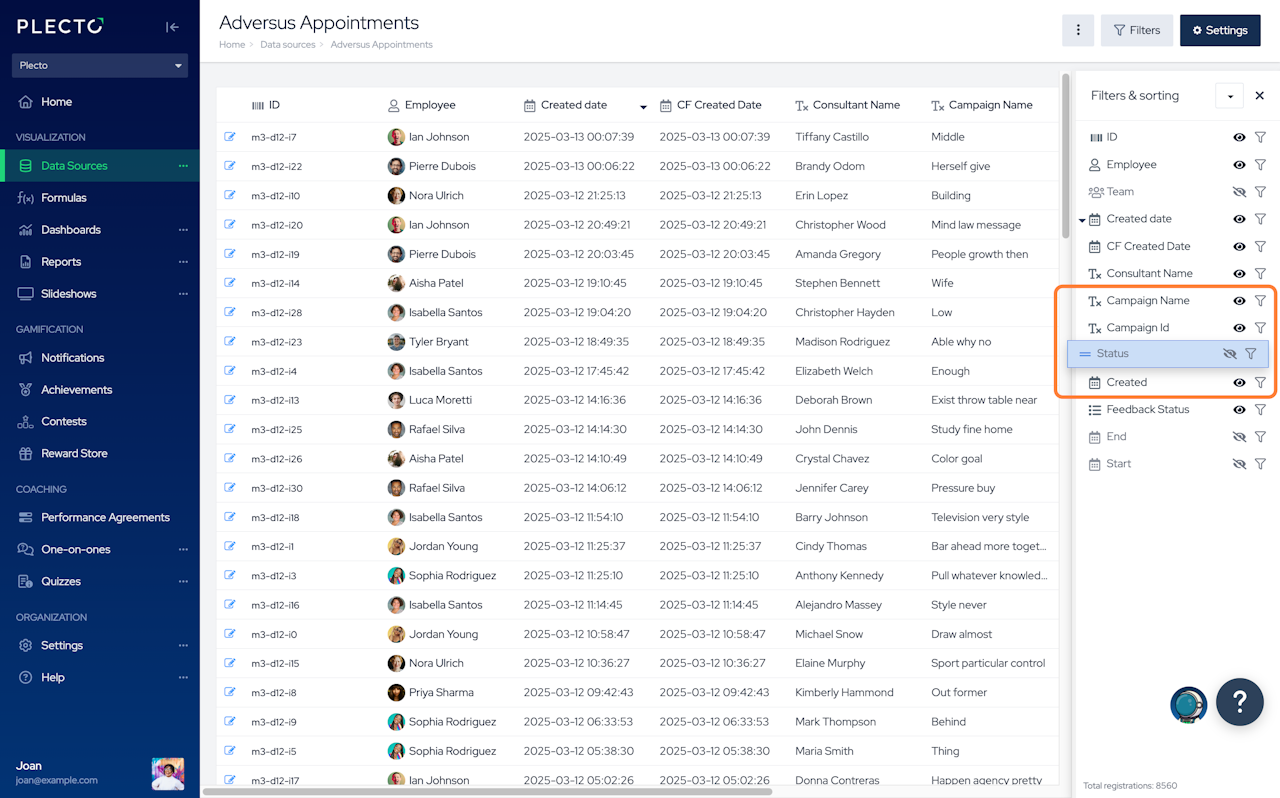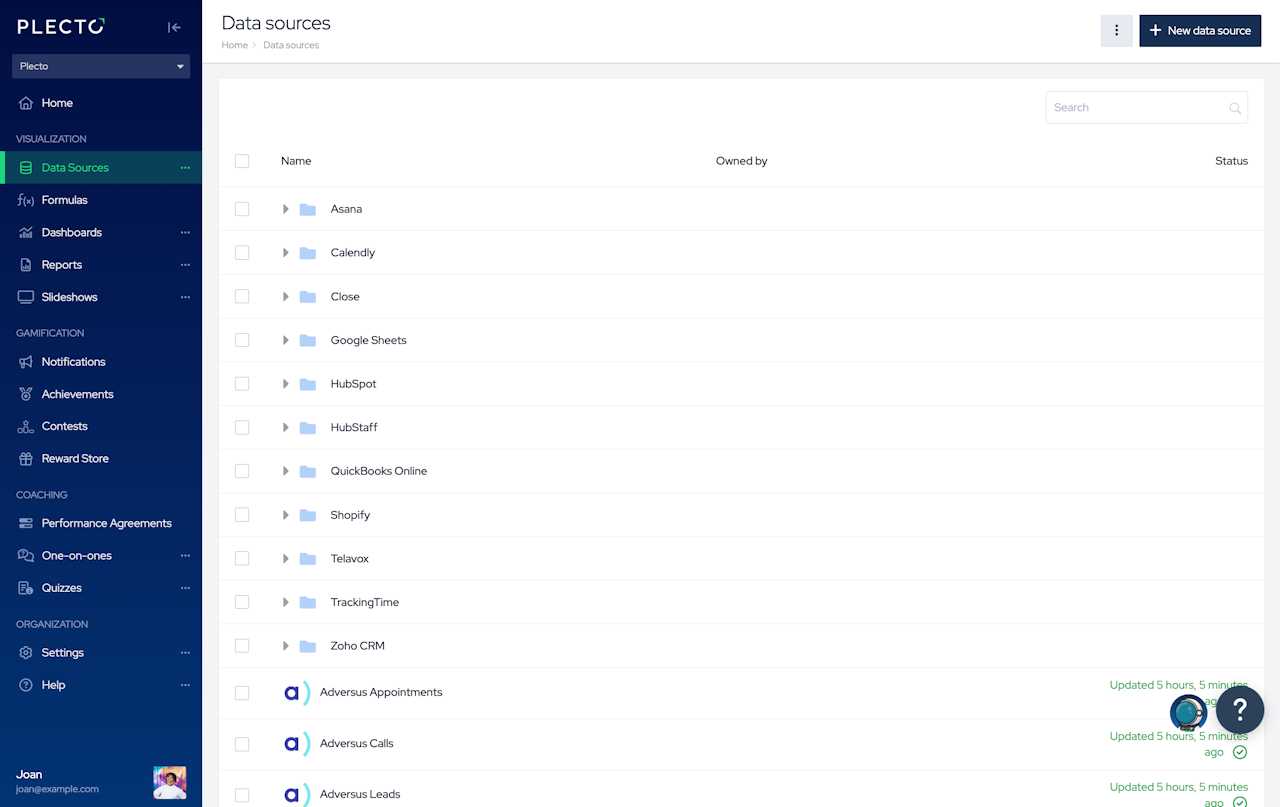
What is a data source?
A data source contains all your raw data. It can store information about your calls, sales, transactions, projects, tasks, and any other metric you use.
You can get data into Plecto from:
External systems,
Databases,
Enter it manually, or
Send it via custom API.
To add a data source, go to Data sources > New data source.
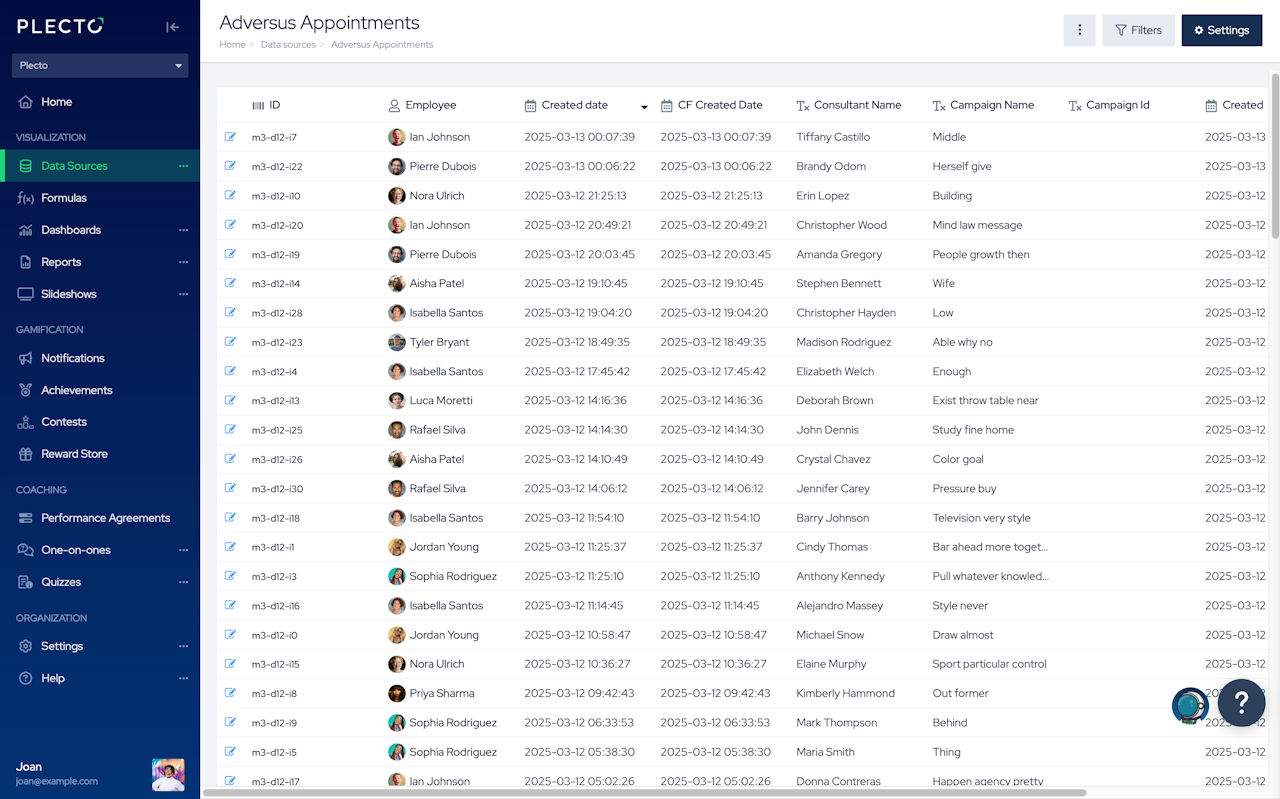
Data source structure
Data sources are organized in rows and columns. In Plecto, we call them registrations and fields.
Data sources support different fields such as decimal number, text, list (dropdown), Yes/No, and other fields.
Each data source requires some mandatory fields. This applies to all data source types (external systems, manual, databases, API):
ID: Each registration in Plecto must have a unique ID. The ID is what allows you to find or update a specific registration in your data source.
Employee: Every registration must be linked to an employee. If your system doesn't send data about employees, we'll use the system name that all registrations will be linked to.
Created date: Every registration must have at least one time stamp. That way, you can create KPIs to see data for today, this week, next month, and so on. If there are multiple date fields in a data source, you can choose which should be the default (primary) date field.
Custom data source fields
All manual data sources support custom fields, and many integration data sources allow you to import custom fields as well.
The custom fields imported from integrations depend on the type of integration. Visit our integration pages to find all the technical details such as the update frequency, custom field support, available data types, and more.
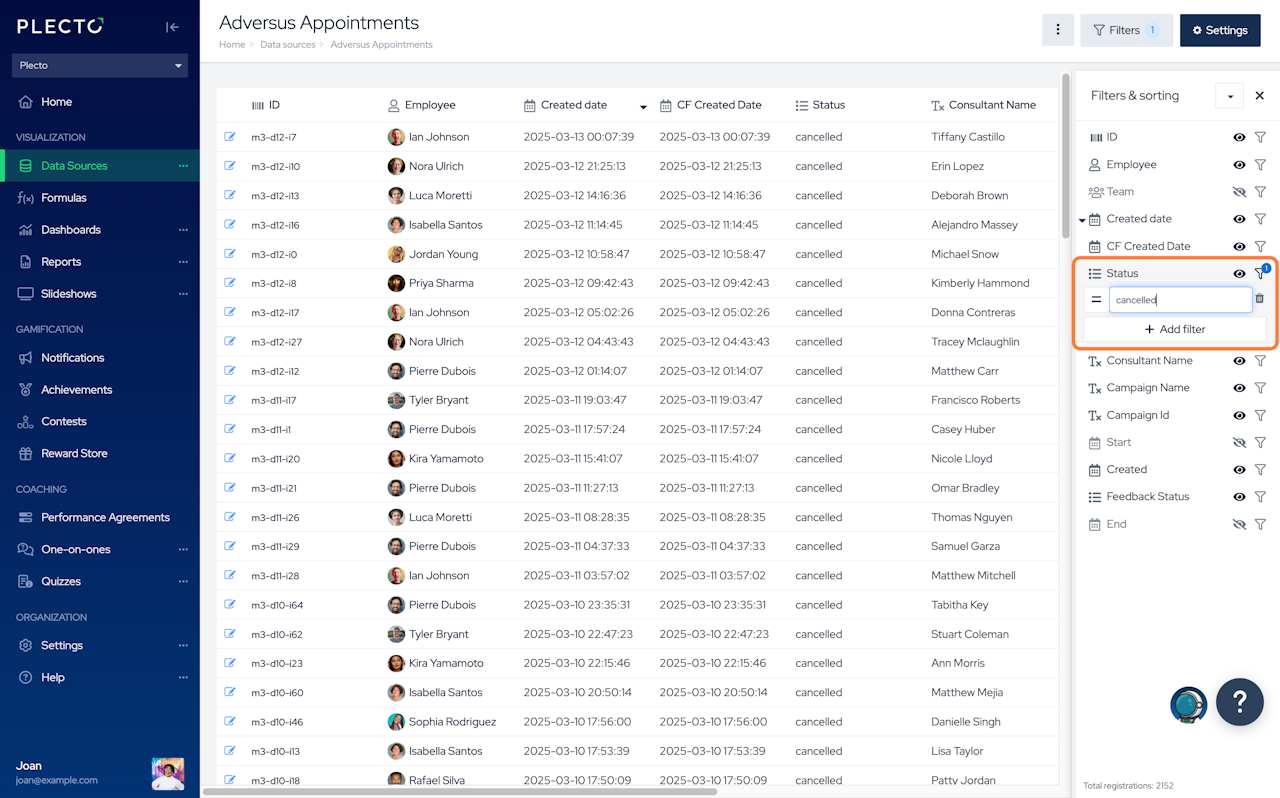
Filter data in your data source
If you have a large data source, you can filter the information to find or troubleshoot your registrations.
Open a data source and click Filters in the top right.
To apply a filter, click the filter icon on the right of a field name and set the filtering parameters. For example, Status = cancelled if you want to see all your cancelled appointments.
Show or hide fields
You can show or hide fields by clicking the eye icon on the right in the Filters slide-out. To show or hide all fields, click the downward-pointing triangle next to the Filters & sorting title and choose one of the available options.
Reorganize your fields
In the Filters slide-out, drag and drop field names to reorganize the columns. This change will only apply in your browser - it will not change for other Plecto users.
Manual data sources
Use Plecto as your own CRM system and add registrations manually. Create individual employee targets, meeting schedules, and more. 🚀

